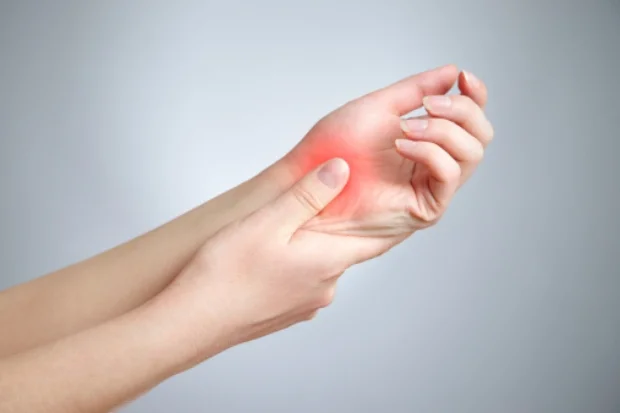Thumb Joint Pain: A Comprehensive Guide
Thumb joint pain can be a debilitating condition that affects your daily life. Whether you’re experiencing occasional discomfort or persistent pain, it’s essential to understand the causes, symptoms, and effective remedies. In this comprehensive guide, we will explore the world of thumb joint pain, providing you with the knowledge you need to manage and alleviate it effectively.
Anatomy of the Thumb Joint

pain in the thumb joint
Before delving into the details of thumb joint pain, let’s start by understanding the intricate anatomy of this crucial joint. Your thumb is an incredible tool, thanks to the complex interplay of bones, ligaments, and tendons. In this section, we’ll break down the structure of the thumb joint in straightforward terms, setting the foundation for a better grasp of the issues it can face.
Common Causes of Thumb Joint Pain
Thumb joint pain can arise from various underlying causes, and it’s crucial to pinpoint the source to find effective relief. Whether you’re troubled by arthritis, an injury, or repetitive strain, we’ll explore the common culprits behind thumb joint pain. Recognizing these triggers is the first step toward targeted treatment and better hand health.
Symptoms and Diagnosis
Recognizing the symptoms of thumb joint pain is crucial for early intervention. If you’ve been experiencing tenderness, swelling, or limited mobility in your thumb, it’s time to explore these telltale signs in detail. Additionally, we’ll discuss the diagnostic process, including what to expect during a physical examination and potential imaging tests.
Types of Thumb Joint Conditions
Thumb joint pain isn’t a one-size-fits-all condition; it comes in various forms. In this section, we’ll differentiate between the most common thumb joint conditions, including osteoarthritis, rheumatoid arthritis, and De Quervain’s tenosynovitis. Understanding the specific condition affecting you is vital for tailored treatment.
Treatment Options
Relief from thumb joint pain comes in many forms, from non-surgical approaches to surgical interventions when necessary. We’ll delve into the world of treatment options, including rest, splints, physical therapy, and surgical procedures. You’ll gain insights into the best course of action for your unique situation.
Home Remedies and Pain Management
In addition to medical treatments, there are practical steps you can take to manage thumb joint pain from the comfort of your home. We’ll offer advice on using ice, over-the-counter medications, and exercises that can help alleviate discomfort. Empower yourself with these self-care strategies.
Lifestyle Adjustments
Preventing thumb joint pain and reducing its impact on your life often involves making lifestyle adjustments. In this section, we’ll suggest ergonomic practices, changes in daily routines, and hand exercises that promote hand health. Small modifications can lead to significant improvements in your quality of life.
Thumb Joint Exercises
Exercise is an integral part of maintaining thumb joint health. We’ll provide a selection of thumb joint exercises and stretches designed to strengthen the muscles, improve flexibility, and reduce pain. Detailed instructions and illustrations will guide you through each exercise.
When to Seek Medical Help
Knowing when it’s time to seek medical attention is crucial for timely intervention. We’ll outline warning signs and symptoms that indicate the need for professional medical evaluation and treatment. Your well-being is our top priority, and recognizing these signs is essential.
Prevention and Long-Term Management
Taking proactive steps to prevent thumb joint pain and managing it over the long term is essential for sustained relief. We’ll provide a range of practical tips and strategies, including hand exercises, ergonomic practices, and self-care routines, to help you maintain optimal hand health.
Frequently Asked Questions (FAQs) About Thumb Joint Pain
Q: What are the common symptoms of thumb joint pain?
A: Symptoms of thumb joint pain may include tenderness, swelling, limited range of motion, and aching in the thumb area.
Q: What causes thumb joint pain in most cases?
A: Thumb joint pain is often caused by conditions like arthritis, repetitive strain injuries, or injuries to the thumb.
Q: How is thumb joint pain diagnosed by healthcare professionals?
A: Diagnosis typically involves a physical examination, discussing symptoms, and sometimes, imaging tests like X-rays or MRI scans.
Q: Can thumb joint pain be managed with home remedies?
A: Yes, you can manage thumb joint pain at home with remedies like ice therapy, over-the-counter pain relievers, and gentle exercises.
Q: Are there specific exercises that can help relieve thumb joint pain?
A: Yes, thumb joint exercises, such as gentle stretches and resistance exercises, can aid in relieving pain and improving mobility.
Q: When should I consider surgery for thumb joint pain?
A: Surgery is considered when conservative treatments fail, and the pain significantly impairs your daily life.
Q: Can lifestyle adjustments prevent thumb joint pain?
A: Yes, making ergonomic changes, practicing hand exercises, and avoiding repetitive thumb movements can help prevent pain.
Q: Are there any natural supplements or remedies that may alleviate thumb joint pain?
A: Some people find relief through supplements like glucosamine or natural remedies like turmeric due to their anti-inflammatory properties.
Q: What are the long-term effects of untreated thumb joint pain?
A: Untreated thumb joint pain can lead to reduced hand function and mobility, affecting daily activities.
Q: Is thumb joint pain associated with a specific age group?
A: Thumb joint pain can affect people of all ages, but it’s more common in older individuals, particularly due to conditions like osteoarthritis.
Conclusion
In conclusion, understanding and effectively managing thumb joint pain is crucial for regaining control of your daily activities. By recognizing the causes, symptoms, and treatment options, you can take proactive steps towards relief. Remember, seeking professional guidance when needed ensures you receive the best care for your specific situation.




